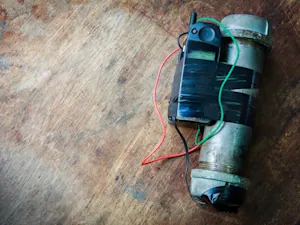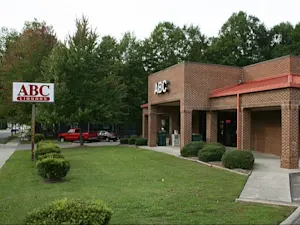
What Is a BIN Attack and How Can You Protect Yourself?
Credit card fraud is becoming increasingly more sophisticated, and one of the latest tactics used by cybercriminals is known as a BIN attack. In a BIN attack, a criminal exploits the first few numbers of a card, using brute force techniques to guess valid card details. Once a vulnerable card is found, they test it with small transactions before escalating to larger fraudulent purchases. Here's everything you need to know about BIN attacks, how they work, and what you can do to protect yourself.
What Is a BIN?
BIN stands for Bank Identification Number, which refers to the first four to eight digits of your credit or debit card. These numbers identify the financial institution that issued the card, making it easier for banks to trace and detect fraud. Many people assume their credit card numbers are completely random, but the BIN provides key information that can be exploited by fraudsters.
Most consumer credit cards start with numbers between 3 and 6, which denote personal banking, payments, and finance. Once criminals identify the BIN, they are already partway to discovering the complete card number and can begin their attack.
How Does a BIN Attack Work?
A BIN attack begins with cybercriminals using automated programs or botnets to generate and test combinations of credit card numbers, expiration dates, and security codes (CVVs). This process, called carding, is part of a larger threat vector aimed at testing the validity of credit cards. The attackers rely on brute-force methods, testing thousands of combinations in quick succession until they find a working one.
Once a valid card number is discovered, the criminal makes small, seemingly harmless purchases, typically under $1. This stage is known as card testing, where the goal is to determine whether the card is active and has any fraud detection mechanisms in place. If the small transactions go unnoticed, the fraudster gains confidence and begins making larger unauthorized purchases, either for their use or to sell the card details on the dark web.
Signs of a BIN Attack
Detecting a BIN attack early is key to minimizing potential damage. Here are some red flags to watch for:
- Small, unexplained charges: Fraudsters often start with minor transactions, usually $1 or less, to test if the card works. These small amounts are easy to miss if you're not regularly checking your account.
- Multiple transactions from the same source: If you notice a pattern of several small purchases from the same IP address or online merchant, this could be a sign that your card is being tested.
- Authorization and CVV errors: Repeated errors in transaction authorizations or incorrect CVV entries could indicate that someone is trying to brute-force your card information.
How to Protect Yourself From a BIN Attack
While there's no way to prevent criminals from trying to guess your card information, there are steps you can take to protect yourself from becoming a victim of a BIN attack.
- Monitor your account regularly: Make it a habit to review your bank and credit card statements frequently, paying attention to even the smallest charges. Small, unauthorized purchases could be the first sign that your card is being targeted.
- Set up transaction alerts: Most banks allow you to set up real-time alerts for purchases above a certain amount. Consider setting notifications for any transaction over one cent to catch suspicious activity early on.
- Use multi-factor authentication (MFA): MFA adds an extra layer of security by requiring two or more verification methods, such as a password and a one-time code sent to your phone, making it more difficult for fraudsters to access your account.
- Shop securely online: Only shop with merchants that use extra security features like Verified by Visa (VBV) or Mastercard SecureCode (MCSC), which prompt for a one-time password during the checkout process. You can also request virtual credit card numbers from your bank to use for online purchases.
- Report suspicious activity immediately: If you spot an unauthorized charge, no matter how small, contact your bank or card issuer right away. Prompt action can prevent further fraud and save you from larger financial losses.
What to Do if You're a Victim of a BIN Attack
If you suspect that your credit card has been compromised through a BIN attack, take immediate steps to limit the damage:
- Notify your bank of the fraud: Most banks have fraud departments dedicated to handling credit card theft. Reporting the incident ensures that your account is monitored for further suspicious activity.
- Request a new card: Contact your bank or credit card issuer to request a new card with a different number.
The Bottom Line
BIN attacks are a growing threat in the world of credit card fraud, but staying vigilant and taking proactive steps can help you protect your finances. Monitoring your accounts, setting transaction alerts, and shopping securely online are just a few ways you can guard against BIN attacks.
References: What Is a BIN Attack? Here's What You Should Know About This New Type of Credit Card Fraud | What is a BIN Attack?























